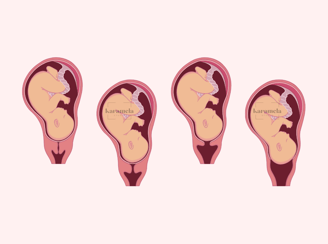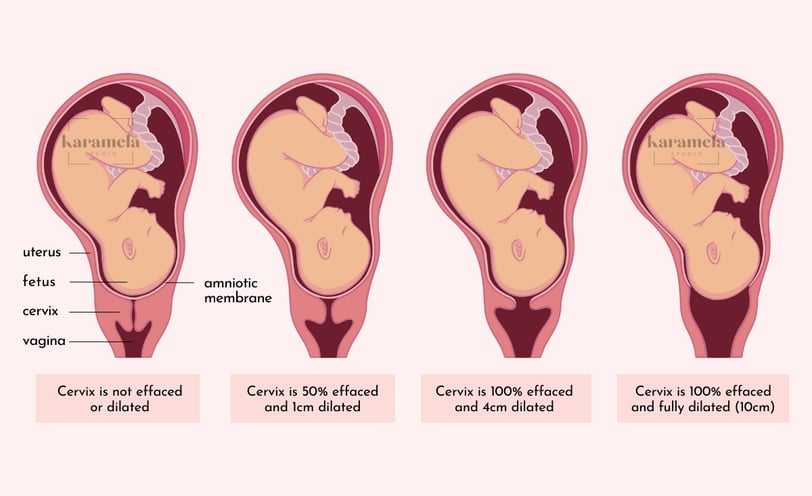Cervical Dilation and Effacement Explained
Milestones in Labor
Karamela Studio
11/8/20232 min read


Effacement and dilation are two important measurements used to assess the progress of labor during childbirth. They refer to different aspects of the cervix as it prepares for childbirth.
Cervical Dilation:
Definition: Cervical dilation refers to the opening or widening of the cervix, which is the lower part of the uterus that connects to the vagina.
Measurement: It is measured in centimeters (cm) and ranges from 0 cm (completely closed) to 10 cm (fully dilated).
Significance: Full dilation (10 cm) is necessary for the baby to pass through the birth canal. It marks the transition from the first stage of labor to the second stage, when pushing begins.
Cervical Effacement:
Definition: Cervical effacement refers to the thinning and shortening of the cervix as it gets ready for childbirth. It is also sometimes described as the cervix "softening".
Measurement: Effacement is expressed as a percentage. A cervix that has not effaced at all is 0% effaced, while a cervix that is completely thinned out is 100% effaced.
Significance: Effacement is crucial because it helps the cervix become more pliable, allowing it to stretch and dilate more easily during labor.
In summary, dilation is about the opening of the cervix, while effacement is about the thinning and shortening of the cervix. Both measurements are assessed by a healthcare provider during vaginal examinations to monitor the progress of labor.
It's worth noting that labor progress can vary greatly from person to person, and some may efface before they dilate significantly, while others may dilate before they efface. Each woman's labor experience is unique.
Symptoms of Cervical Effacement
While effacement itself doesn't usually cause specific symptoms, there are some signs that may indicate it's occurring:
Lightening or Dropping: As the baby moves lower into the pelvis, you may feel a sensation of "dropping," which can lead to increased pressure in the lower abdomen and pelvis.
Increased Pelvic Pressure: You might experience increased pressure in your pelvis, often described as feeling like there's a lot of weight in your lower abdomen.
Changes in Urination: Effacement, along with the baby's descent, can put pressure on your bladder, leading to more frequent urination.
Backache or Lower Back Pain: As the baby moves down and the cervix thins, you may experience more pressure on your lower back.
Change in Vaginal Discharge: Some women notice an increase in vaginal discharge as the cervix effaces. It may be clear, pink-tinged, or contain streaks of blood (known as "bloody show").
Mild Contractions: Effacement often accompanies dilation, and as the cervix thins, you may experience mild, irregular contractions. These are typically not as intense or regular as active labor contractions.
Sensation of Stretching or Pressure in the Pelvic Area: You may feel a stretching or pressure sensation as the cervix thins and the baby moves down.
It's important to note that every pregnancy and labor experience is unique. Some women may not notice these signs, while others may experience them more prominently.
If you suspect you are in labor or experiencing any of these signs, it's essential to contact your healthcare provider for guidance and assessment. They will be able to provide personalized advice based on your specific situation.
PLEASE NOTE: The content provided in this article is not a substitute for professional medical advice and should not be employed for self-diagnosis or self-treatment.


